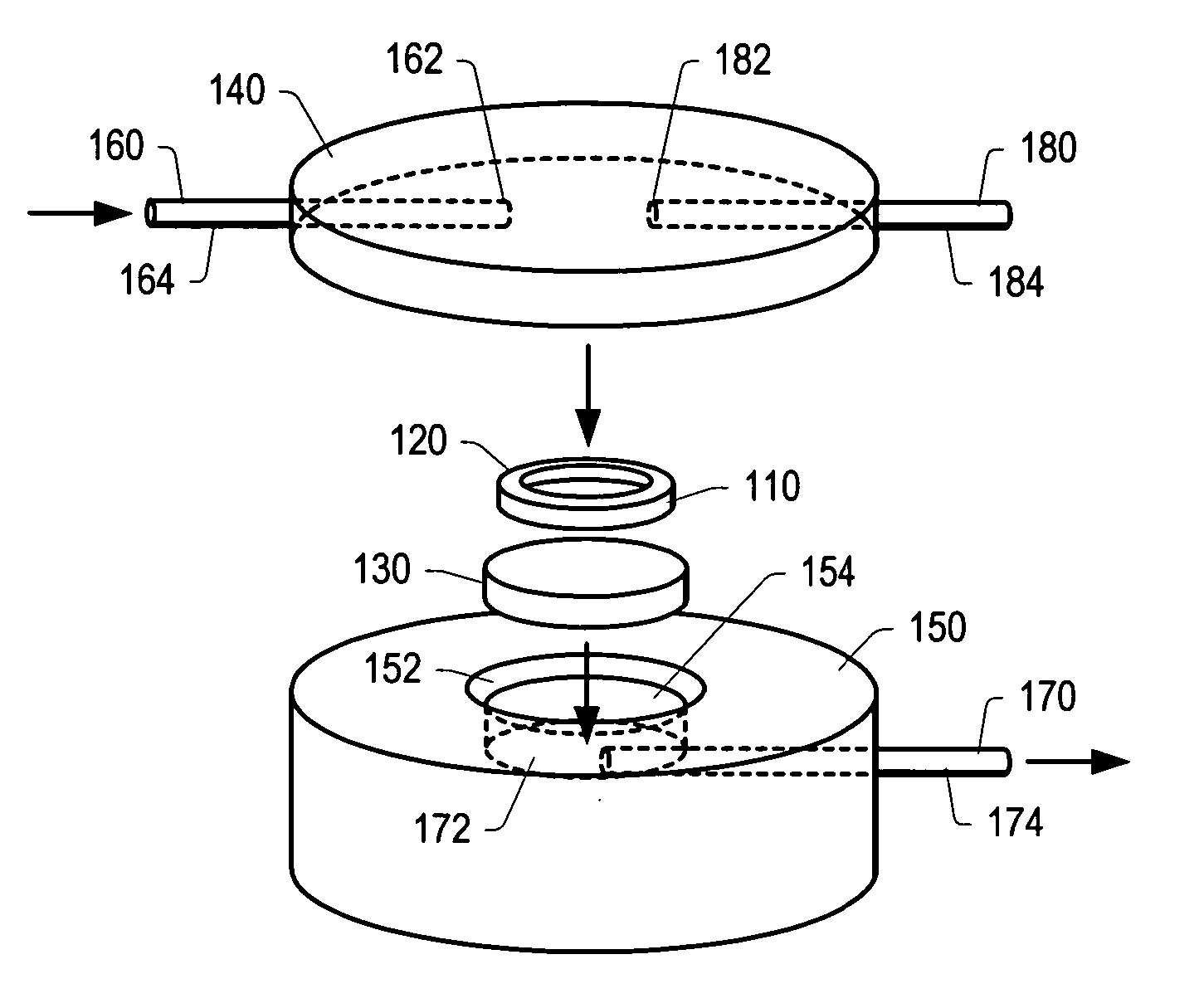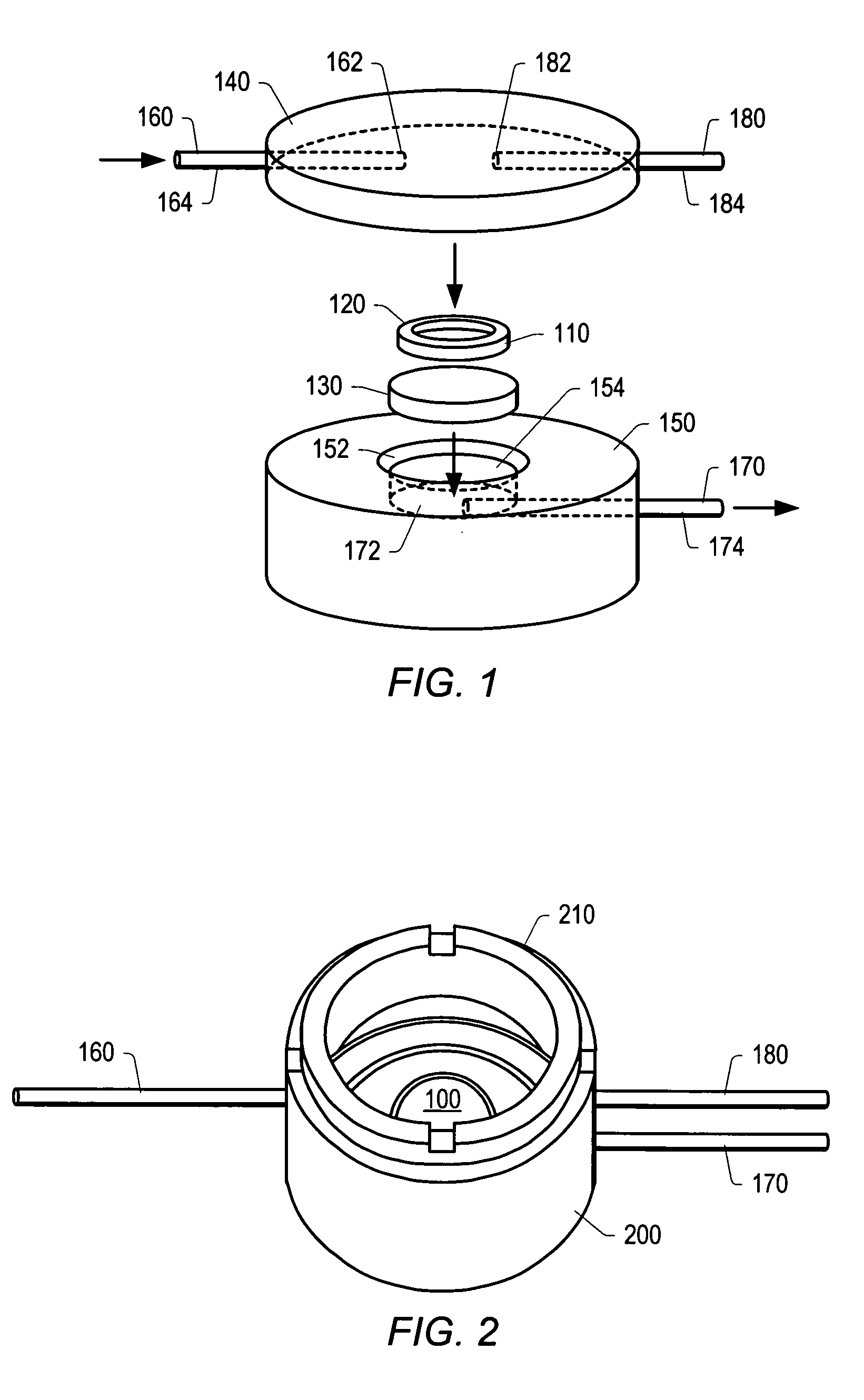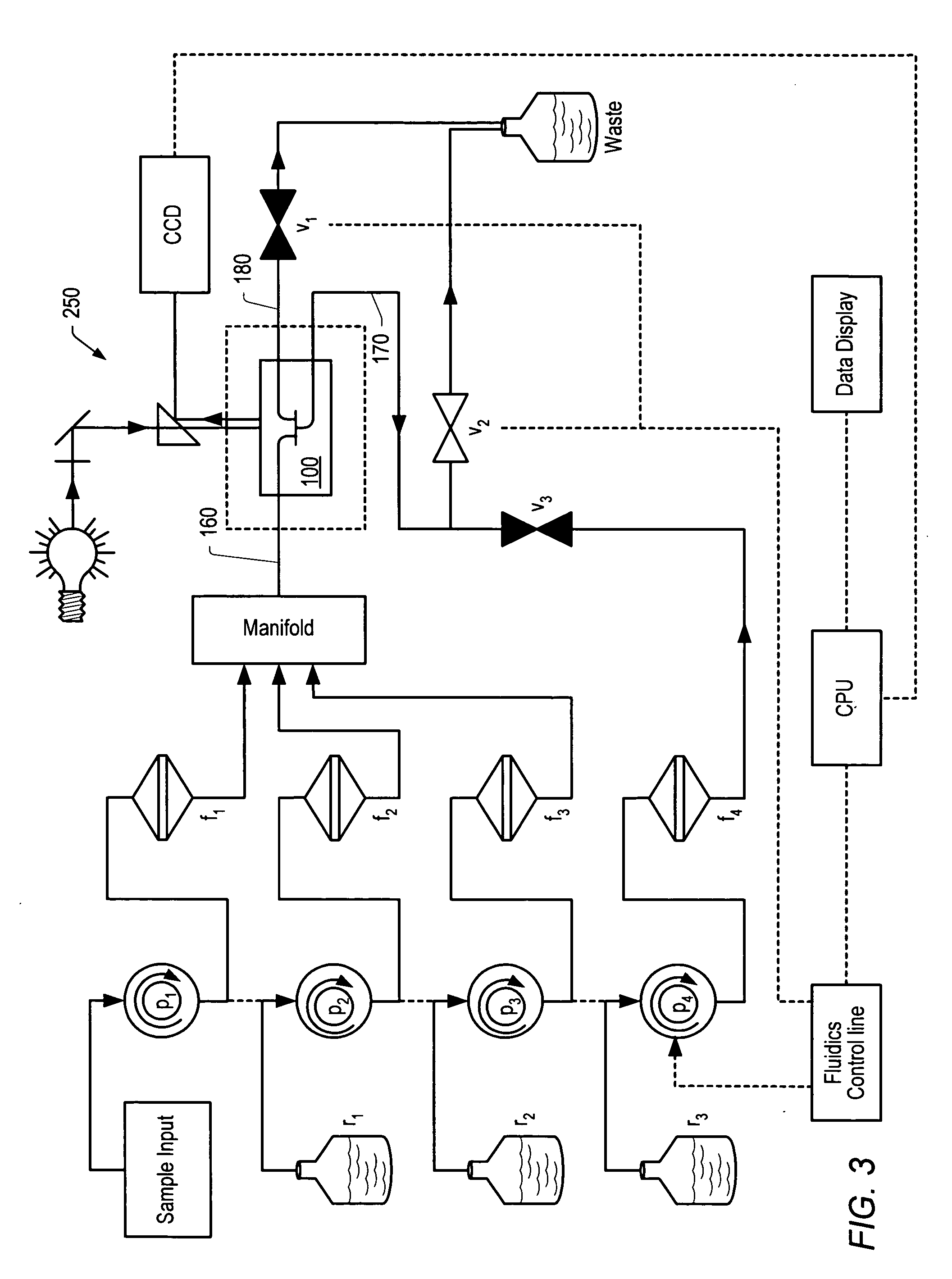Capture and detection of microbes by membrane methods
a technology of membrane methods and microorganisms, applied in the field of detection methods and devices for analytes in fluids, can solve the problems of poor specificity of procedures, difficult to adapt to online rapid analysis, and high cost of tests
- Summary
- Abstract
- Description
- Claims
- Application Information
AI Technical Summary
Benefits of technology
Problems solved by technology
Method used
Image
Examples
example
[0128] Macroporous beads were prepared using the method for biphasic suspension polymerization method described herein. The beads so obtained were analyzed using light and fluorescence microscopy. The transparency of the agarose beads permitted the visualization of the fluorescent beads in different sections of the agarose beads. The presence of pores was confirmed by adding 1 μm fluorescent beads. Using light and fluorescence microscopy, the presence of conduits could not be conclusively determined. The beads accumulated into voids present in the bead, probably the ends of conduits.
[0129] Experiments were initially performed using Merck's Omnipure agarose powder. Low yields of non-spherical particles ranging between 250 and 300 μm were obtained. Experiments performed with an exaggerated amount of the hydrophilic emulsifier, 3.5 mL span 85 resulted in beads without pores but with a rough surface. By reducing the amount of the hydrophobic emulsifier, massive gellation due to the poo...
PUM
| Property | Measurement | Unit |
|---|---|---|
| diameter | aaaaa | aaaaa |
| thickness | aaaaa | aaaaa |
| diameter | aaaaa | aaaaa |
Abstract
Description
Claims
Application Information
 Login to View More
Login to View More - R&D
- Intellectual Property
- Life Sciences
- Materials
- Tech Scout
- Unparalleled Data Quality
- Higher Quality Content
- 60% Fewer Hallucinations
Browse by: Latest US Patents, China's latest patents, Technical Efficacy Thesaurus, Application Domain, Technology Topic, Popular Technical Reports.
© 2025 PatSnap. All rights reserved.Legal|Privacy policy|Modern Slavery Act Transparency Statement|Sitemap|About US| Contact US: help@patsnap.com



